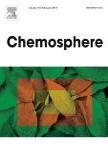版权所有:内蒙古大学图书馆 技术提供:维普资讯• 智图
内蒙古自治区呼和浩特市赛罕区大学西街235号 邮编: 010021

作者机构:Department of Chemical and Biomolecular Engineering National University of Singapore 4 Engineering Drive 4 117585 Singapore Department of Materials Science & Engineering National University of Singapore 7 Engineering Drive 1 117574 Singapore
出 版 物:《Chemosphere》 (Chemosphere)
年 卷 期:2024年第366卷
页 面:143492页
核心收录:
学科分类:0830[工学-环境科学与工程(可授工学、理学、农学学位)] 0817[工学-化学工程与技术] 08[工学] 0703[理学-化学]
主 题:Wastewater treatment
摘 要:Aniline, a common pollutant in industrial wastewater, requires an effective treatment method with minimal chemical usage. In this study, a two-stage catalytic oligomerization process has been developed to address this issue by converting soluble aniline into insoluble oligomers for wastewater treatment. In the first stage, aniline is oxidized using hydrogen peroxide (H2O2) and a green catalyst, iron tetraamido macrocyclic ligand (Fe-TAML) to form aniline tetramers or pentamers. In the second stage, these oligoanilines undergo further oxidation with H2O2 alone at a higher temperature, resulting in the formation of N-phenylphenazine or its derivatives. These macrocyclic compounds precipitate from the wastewater due to π− π stacking, allowing easy separation through decantation or gravity filtration. After process optimization, only 3 mg/L of Fe-TAML and 2 g/L of H2O2 are required to treat 1 g/L of aniline, achieving a remarkable 96.8% aniline removal efficiency and a 62.5% precipitate yield. This two-stage oxidation approach shows promise for treating aniline and similar aromatic compounds in real industrial wastewater. © 2024 Elsevier Ltd